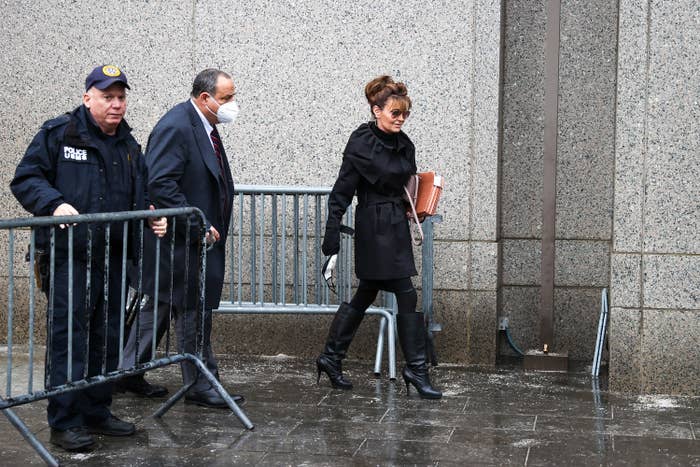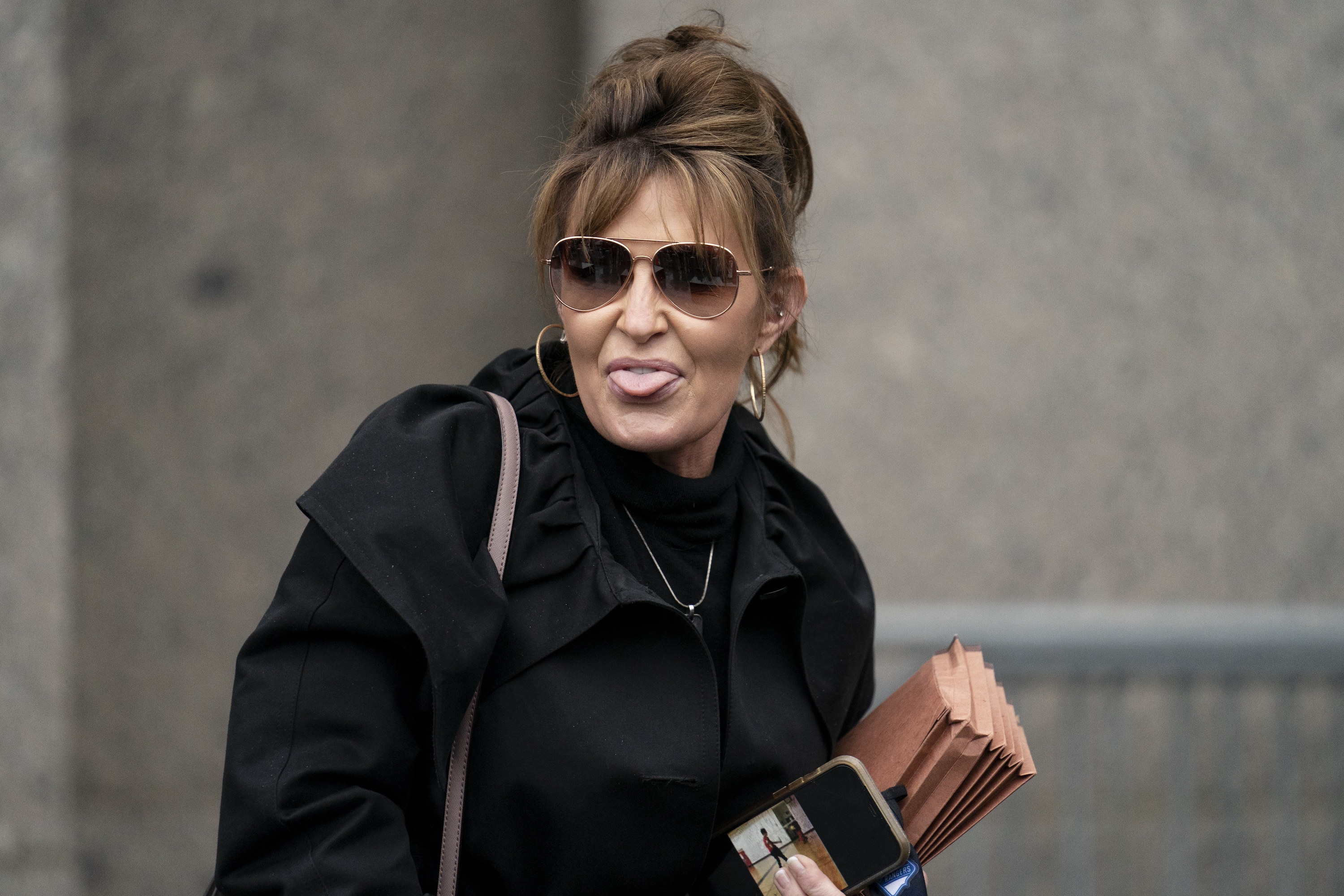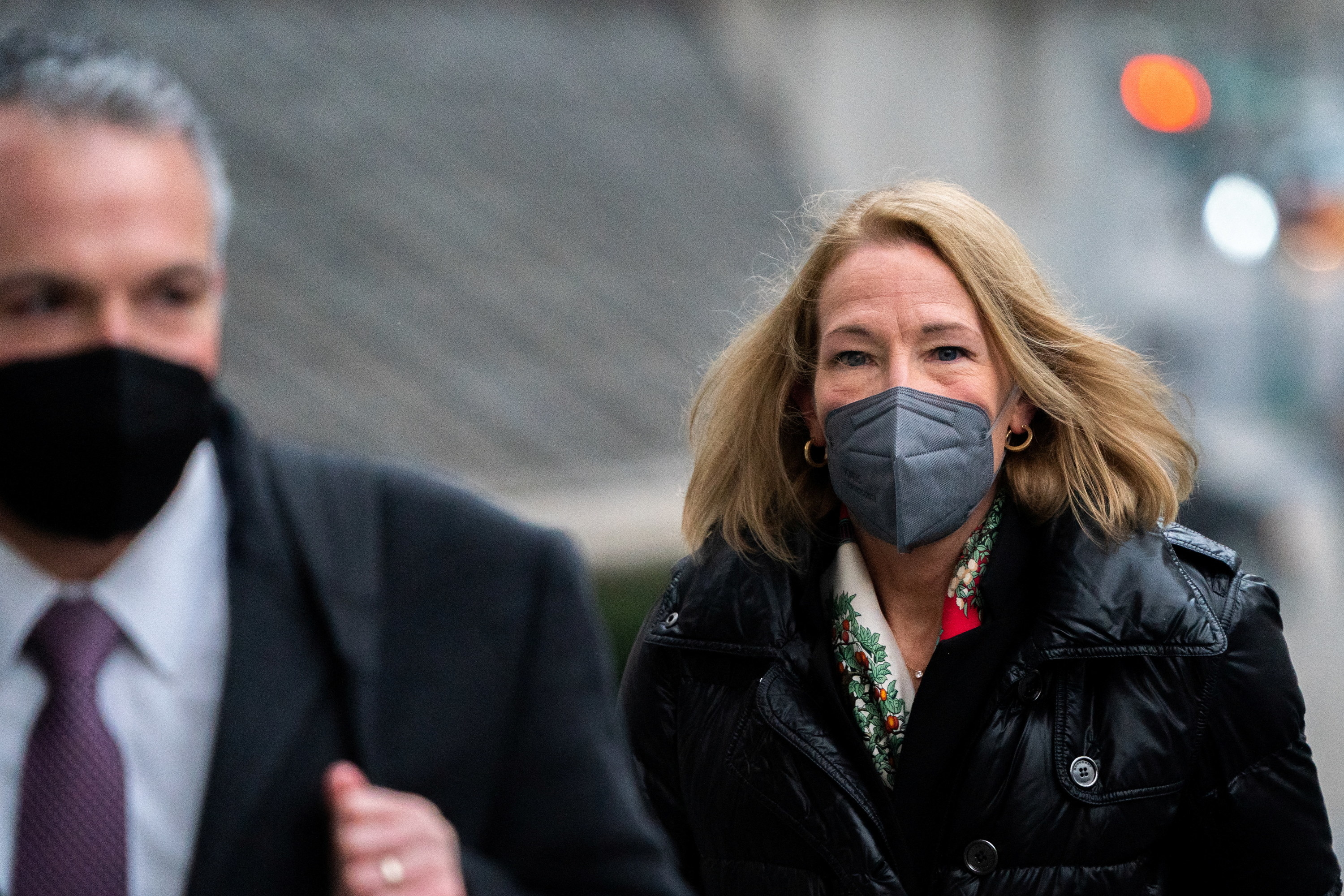
MANHATTAN — When former Alaska governor Sarah Palin entered the room full of potential jurors in federal court on Thursday, several people in the crowd sat up straight and craned their necks to gain a glimpse of the 2008 Republican nominee for vice president. Two women turned to each other and whispered excitedly.
“The parties in this case are well known,” Judge Jed Rakoff warned the potential jurors, acknowledging they were likely to have preconceived views of Palin and the New York Times, which she is suing for libel.
“What is central to every jury is the American sense of fair play,” the judge continued. “Jurors of course have all sorts of views, but when they become jurors they put their views aside.”
Once the jury of nine had been chosen among the 82 potentials, Palin’s attorney Shane Vogt began his opening statement by telling the court his team had “eyes wide open.”
“We’re keenly aware of the fact we’re fighting an uphill battle in terms of initial reaction,” he told the jury of five women and four men, who hail from all over New York City — an area not generally seen as a bastion of the right-wing politics Palin is most famous for.
“Give us a fair shot,” he said. “Nothing more, nothing less. We’re not here trying to win your votes for Gov. Palin or any of her policies.”
Palin is suing the Times over a 2017 editorial entitled “America’s Lethal Politics,” which she argues defames her by alleging she incited the 2011 Arizona shooting that seriously injured then–member of Congress Gabby Giffords and killed six others. The piece incorrectly asserted a “clear” link of “political incitement” between the shooter and a 2010 map published by Palin’s political action committee that featured rifle crosshairs over several vulnerable Democratic districts, including Giffords'. No such link was ever found between the map and that shooter, who had mental illness and no clear political views, aside from a long-running fixation on Giffords.
The editorial was published online on June 14, 2017, hours after a Bernie Sanders supporter opened fire on Republican members of Congress practicing for a baseball game, seriously injuring Rep. Steve Scalise.
As Times attorney David Axelrod told the jury, the newspaper amended the two incorrect sentences of the 12-paragraph piece and issued a prominent correction roughly 12 hours after it was published. He said James Bennet, the editor in charge of the opinion section at the time, never meant to convey that Palin was responsible for the shooting and had barely slept that night as he agonized over the error. “There is no doubt that the Times made a regrettable error,” Axelrod said in opening statements.
But he also argued that Palin had not suffered any harm as a result of the editorial, stating that she went on to be paid for speeches and even appeared in 2020 as a contestant on The Masked Singer.

Legal observers believe Palin will have a tough time in her suit because she is a prominent public figure and therefore faces a higher burden of proof than a normal person (Axelrod, the Times attorney, described her to the jury as a “media sensation”).
For Palin’s attorneys to succeed, they will need to prove Bennet and the Times acted with “actual malice,” a legal concept established by the Supreme Court in the 1960s in another libel case involving the same newspaper. That means they must show when Bennet published the incorrect statement, he acted either with knowledge of or reckless disregard for its falsity.
The so-called actual malice standard has been a central tenet of media law — and American democracy — for decades, Gabe Rottman, the director of the Technology and Press Freedom Project with the Reporters Committee for Freedom of the Press, told BuzzFeed News.
“The actual malice rule is really important for protecting accountability journalism,” Rottman said. “In the rush of the news cycle, unintentional mistakes are unintentional. In order to preserve breathing space for robust public discourse, having the actual malice rule under the First Amendment is essential to ensuring that public discourse is robust.”
But Palin’s attorney told the jury that Bennet had violated the actual malice standard by actively choosing not to fact-check his claim, arguing he and the paper had a narrative against Palin they wanted to perpetuate. “The reason he didn’t check those facts was simple: He didn’t care,” Vogt said.
During Thursday’s hearing, Palin sat quietly at the front of the wood-paneled courtroom in downtown Manhattan, wearing a KN95 mask that is required for all in attendance during the pandemic.
Her positive COVID diagnosis last week had delayed the trial until Thursday. She was subsequently spotted dining outdoors while infected at the same restaurant where she had been seen eating inside in contravention of New York rules that bar unvaccinated people from entering restaurants.

Before jury selection began, the judge heard arguments from both sides about what evidence they would be able to raise in their 30-minute opening statements.
The newspaper’s attorneys were successful in barring Palin’s counsel from referring to a 2017 ad campaign that the governor’s team said involved the Times “professing itself as a purveyor of the truth.”
“So?” Judge Rakoff asked. “I really haven’t seen a newspaper saying we’re telling a bunch of lies.”
Palin’s counsel was also barred from referring to emails said to be from readers who objected to the editorial, including one man who said he would cancel his newspaper subscription in protest. The Times’ attorneys complained they had no way to cross-examine these people or even to know their real identities.
“We don’t know who these people are,” said Axelrod, adding that they could potentially even be friends of Palin.
Palin’s team was permitted to refer to excerpts from the Times’ own editorial standards and guidelines on fact-checking.

The first witness called by Palin’s team to testify was Times reporter Elizabeth Williamson, who previously served as an editorial board member and wrote the first draft of the piece before Bennet later added the wording that Palin is suing over.
Palin leaned over her table and listened intently as her attorney grilled Williamson on the team’s research and decision-making processes on the day the piece was published. That included submitting into evidence several emails between Williamson and her editors in which they discussed the news unfolding and tried to narrow in on an angle.
Williamson said the focus of her piece was always about “the general atmosphere in the runup to the shooting.”
“Generally, what the editorial was about was the overheated political rhetoric and the demonization of one’s opponents by both parties,” Williamson said.
Her testimony will continue when court resumes on Friday.
Before the trial began, Times spokesperson Jordan Cohen told BuzzFeed News the newspaper would be “seeking to reaffirm a foundational principle of American law: Public figures should not be permitted to use libel suits to punish unintentional errors by news organizations.”
“We published an editorial about an important topic that contained an inaccuracy. We set the record straight with a correction,” Cohen said. “We are deeply committed to fairness and accuracy in our journalism, and when we fall short, we correct our errors publicly, as we did in this case."
